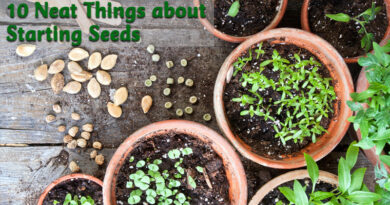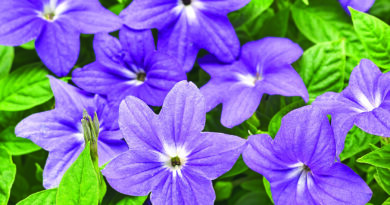Wild Strawberry
Have you ever considered a groundcover you can make jam from? Wild strawberries will multiply quickly to cover an area and, while they don’t fruit as much as their cultivated cousins, they will reward you with fragrant scent and a few of the wonderful red berries.
But before we go any further: botanically speaking, strawberries aren’t berries but “aggregate accessory fruit”. Nonetheless, we’ll call them berries.

There are two species of strawberry native to Canada: Fragaria viriginiana and Fragaria vesca. The two occur in the same spaces and bloom at the same time; the reason they’ve never become one is a matter of chromosomes: F. virginiana is octoploid and F. vesca is diploid.
When you find them growing wild, it hardly matters which species you have. If you are going to grow them, a minor difference is that F. vesca has flowers and fruit that grow above the leaves while F. virginiana flowers and fruit grow at or below leaf level. If you want the flowers and fruit to be highly visible, get F. vesca. F. vesca is also everbearing, whereas F. viginiana bears fruit only in June.

Expect them to grow up to five inches high. Most species plants (not cultivated varieties) will reproduce by stolons, but not all. You will find a few of F. vesca that don’t reproduce by stolons. The cultivars, on the other hand, rarely reproduce by stolons, though; it’s a trade off. Strawberry plants only live a few years, so if you want to use them as a groundcover, stoloniferous reproduction is desirable.
For eating out of hand, many people find wild strawberries rather sour and seedy. If you are one of those people, try lightly crushing them and sprinkling with a bit of sugar to bring out the flavour. You will be reformed. They have an intense flavour, far superior to anything that was shipped here in a clamshell from Florida.
Wild strawberries grow best in full sun but will do alright in part sun. You’ll get more berries in full sun. Choose a site with good sun and good drainage. Strawberries won’t be happy in alkaline soil or anything with too much clay. They like rich soil that drains well.
Plant them about one foot apart for good coverage. You can plant them early in the fall or spring. You should remove all the flowers in the first year. If you don’t, the plants will put too much energy into producing seed (flowers and berries) and not enough into setting down good roots.
The plants like plenty of water; aim to give them a good one inch per week. Watch for slug damage; slugs adore strawberry leaves and strawberries and should be dealt with if they are eating more than you can stand.
Check them often for leaf damage and cut out any leaves that are looking diseased. If cutting the leaves out doesn’t control the problem, you probably have a disease that is likely fatal. Wait and see, but think about what you might plant next year instead of strawberries. The bacterial and fungal diseases stay in the soil for up to 15 years.
Wild strawberries are not without problems, but they will make a gorgeous groundcover for a few years. Go ahead and give them a try!
To get access to all our local content, subscribe now!




